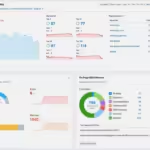Introduction
Position tracking in Semrush is a vital tool for monitoring and improving your website’s performance in search engine results pages (SERPs). This guide will walk you through the detailed steps to set up position tracking and leverage its benefits for enhancing your SEO efforts.
Understanding Position Tracking
Position tracking allows you to track and analyze your website’s keyword rankings across various search engines and locations. It provides valuable insights into how your SEO efforts impact your search visibility over time.
Step-by-Step Guide to Set Up Position Tracking in Semrush
-
Access Your Semrush Account
Log in to your Semrush account. If you don’t have one yet, sign up for a plan that includes the position tracking feature.
-
Create a New Project
Navigate to the Projects section and create a new project dedicated to position tracking. Enter your website’s domain and relevant details to get started.
-
Set Up Position Tracking Tool
Locate the Position Tracking tool within the Semrush dashboard. Click on it to access the tool and start setting up your tracking parameters.
-
Add Keywords to Track
Enter the keywords you want to monitor for your website. You can add keywords manually or import them from other sources. Semrush also provides keyword suggestions based on your website’s content and competitors’ data.
-
Configure Tracking Settings
Customize your tracking settings:
- Target Location: Select the geographical region or specific countries where you want to monitor keyword rankings.
- Devices: Choose whether to track rankings on desktop, mobile, or both.
- Search Engines: Specify the search engines (e.g., Google, Bing) you want to track.
- Frequency: Set the frequency of updates to receive regular reports on keyword performance.
-
Review and Start Tracking
Double-check your settings to ensure accuracy. Review the keywords, locations, devices, and search engines you’ve selected. Once satisfied, click on the “Start Tracking” button to initiate the tracking process.
Best Practices for Using Position Tracking
Monitor Keyword Performance Regularly
Regularly review SEMrush’s position tracking reports to stay updated on changes in keyword rankings. Identify trends and opportunities that can inform adjustments to your SEO strategy.
Analyze Competitors
Utilize SEMrush’s Competitors Discovery feature to compare your keyword rankings with competitors. Gain valuable insights into their strategies and identify areas for improvement in your own approach.
Optimize Content and SEO Strategy
Leverage position-tracking data to optimize your website’s content. Focus on enhancing the relevance and user experience of pages that rank lower for critical keywords. Additionally, prioritize acquiring high-quality backlinks to strengthen your site’s authority.
Adjust Strategies Based on Insights
Use insights from position tracking to refine your SEO strategies continuously. Capitalize on high-performing keywords and adjust resource allocation to maximize organic traffic and conversions over time.
By implementing these best practices, you can effectively utilize SEMrush’s position-tracking tool to enhance your SEO efforts, improve keyword rankings, and achieve sustainable growth for your website.
Optimize Your SEO Strategy with SEMrush Position Tracking!
Start leveraging SEMrush’s position tracking feature today to monitor keyword rankings, refine your SEO tactics, and drive sustainable growth for your website.
Conclusion
Position tracking in SEMrush is indispensable for monitoring your website’s keyword rankings and optimizing your SEO performance. By implementing the steps outlined in this guide, you can harness SEMrush’s robust position-tracking tool to align with your digital marketing objectives effectively.
Take proactive steps today to integrate position tracking into your SEMrush toolkit. By doing so, you’ll gain valuable insights into your SEO efforts, identify opportunities for improvement, and refine your strategies to achieve sustainable growth for your website.
Start leveraging SEMrush’s position tracking now to enhance your SEO strategy and propel your website toward increased visibility and success in search engine results. With continuous monitoring and actionable data at your disposal, you can confidently navigate the competitive landscape of digital marketing and achieve long-term SEO success.


